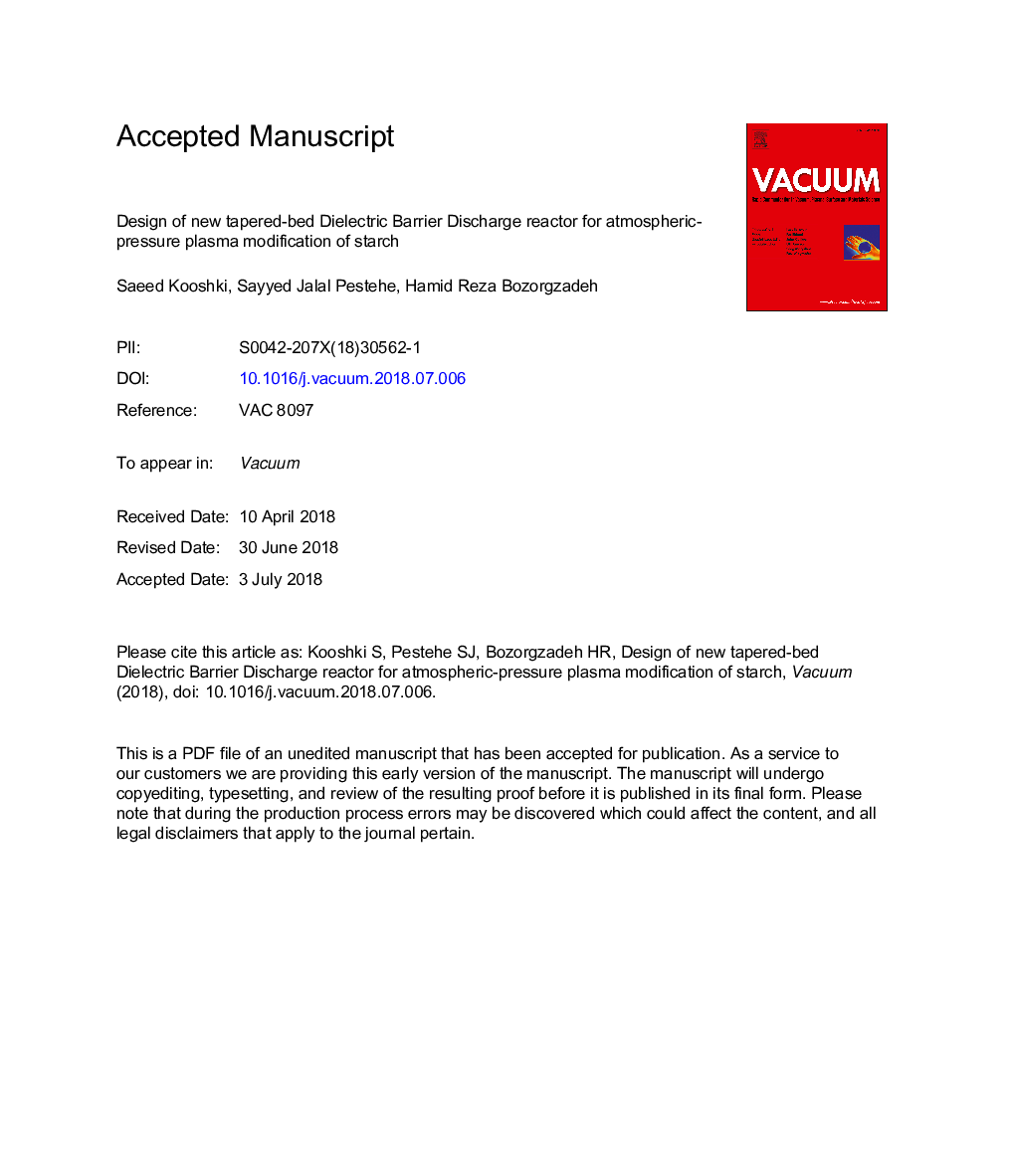| Article ID | Journal | Published Year | Pages | File Type |
|---|---|---|---|---|
| 8044022 | Vacuum | 2018 | 24 Pages |
Abstract
A new Tapered Fluidized-Bed Dielectric Barrier Discharge (TBD) reactor was designed in order to better utilize Non-thermal plasma technology at atmospheric-pressure for improving the functionality of biopolymers powder. A feasibility study was completed and potato starch was successfully modified by the TBD reactor to prepare high temperature drilling starch according the NISOC (National Iranian South Oil Company) standard specification. The plasma excitation energy in the TBD reactor was measured using line-ratio method of optical emission spectroscopy equal to 0.7-0.73eV. The electron density equal to 3â¯Ãâ¯1016cmâ3 was determined using the Stark broadening of atomic argon spectrum at λâ¯=â¯696.5â¯nm. The optimum values of reactor excitation energy, plasma-granules interactions time and gas flow rate as the main factors of the modification experiments were achieved using response surface methodology. The Thermogravimetric analysis indicated an increase in thermal resistance of modified starch due to crass-linking reaction with non-chemical argon plasma. Modified and native starch was used as water-based drilling mud additive for rheological study. After hot rolling the muds in 121â¯Â°C, desired reductions in both the viscosity (by 15%) and fluid loss (by 30%) of modified starch mud were observed.
Keywords
Related Topics
Physical Sciences and Engineering
Materials Science
Surfaces, Coatings and Films
Authors
Saeed Kooshki, Sayyed Jalal Pestehe, Hamid Reza Bozorgzadeh,
